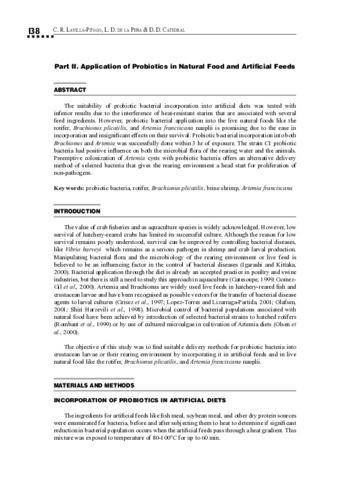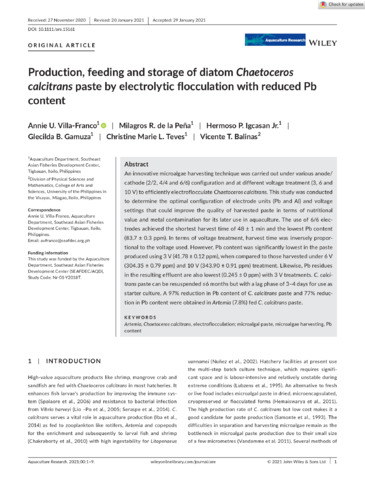International study on Artemia. XXV. Factors determining the nutritional effectiveness of Artemia: The relative impact of chlorinated hydrocarbons and essential fatty acids in San Francisco Bay and San Pablo Bay Artemia
- Global styles
- MLA
- Vancouver
- Elsevier - Harvard
- APA
- Help

Download URL
www.vliz.beDate
1985Page views
2,076ASFA keyword
AGROVOC keyword
Taxonomic term
Metadata
Show full item record
Share
Abstract
Different Artemia cyst samples harvested from the San Francisco and the San Pablo Bay regions (California, U.S.A.), and suspect because of their poor nutritional performance in fish and crustacean farming, have been analysed for their chlorinated hydrocarbon and fatty acid content. These results have been correlated with survival, growth, and biomass production of larvae of the marine crustacean Mysidopsisbahia Molenock fed those different Artemia in a standard culture test. Differences in chlorinated hydrocarbon content do not correlate with differences in mysid culture performance. Fatty acid profiles reveal three groups of Artemia batches with high, intermediate, and low levels of the highly unsaturated fatty acid 20:5ω3. The production yield of the mysid larvae could be correlated with the relative level of the 20:5ω3 fatty acid in the Artemia nauplii.
Suggested Citation
Léger, P., Sorgeloos, P., Millamena, O. M., & Simpson, K. L. (1985). International study on Artemia. XXV. Factors determining the nutritional effectiveness of Artemia: The relative impact of chlorinated hydrocarbons and essential fatty acids in San Francisco Bay and San Pablo Bay Artemia. Journal of Experimental Marine Biology and Ecology , 93(1-2), 71-82. https://doi.org/10.1016/0022-0981(85)90149-2
Type
ArticleISSN
0022-0981Collections
- Journal Articles [1258]
Related items
Showing items related by title, author, creator and subject.
-
Improved reproductive performance of tiger tail seahorse, Hippocampus comes, by mysid shrimp fed singly or in combination with other natural food
Buen-Ursua, Shelah Mae A.; Azuma, Teruo; Arai, Katsutoshi; Coloso, Relicardo M. (Springer Verlag, 2015)The brood size, parturition frequency and parturition occurrence of tiger tail seahorse, Hippocampus comes were evaluated for 180 days using single and combined diets comprising Artemia salina, mysid shrimp Mesopodopsis ... -
Use of bacteria as biological control agent against microbial diseases in shrimp (Penaeus monodon) and crab (Scylla serrata) hatcheries: Part II. Application of probiotics in natural food and artificial feeds
Lavilla-Pitogo, Celia R.; de la Peña, Leobert D.; Catedral, Demy D. (Aquaculture Department, Southeast Asian Fisheries Development Center, 2005-03)The suitability of probiotic bacterial incorporation into artificial diets was tested with inferior results due to the interference of heat-resistant starins that are associated with several feed ingredients. However, ... -
Production, feeding and storage of diatom Chaetoceros calcitrans paste by electrolytic flocculation with reduced Pb content
Villa-Franco, Annie; de la Peña, Milagros R.; Igcasan Jr., Hermoso P.; Gamuza, Glecilda B.; Teves, Christine Marie L.; Balinas, Vicente T. (Wiley, 2021-03-02)An innovative microalgae harvesting technique was carried out under various anode/cathode (2/2, 4/4 and 6/6) configuration and at different voltage treatment (3, 6 and 10 V) to efficiently electroflocculate Chaetoceros ...





